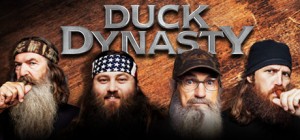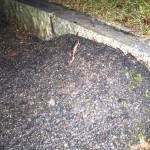“I left the woods for as good a reason as I went there. Perhaps it seemed to me that I had several more lives to live, and could not spare any more time for that one. It is remarkable how easily and insensibly we fall into a particular route, and make a beaten track for ourselves. I had not lived there a week before my feet wore a path from my door to the pondside; and though it is five or six years since I trod it, it is still quite distinct. It is true, I fear that others may have fallen into it, and so helped to keep it open. The surface or the earth is soft and impressible by the feet of men; and so with the paths which the mind travels. How worn and dusty, then, must be the highways of the world, how deep the ruts of tradition and conformity! I did not wish to take a cabin passage, but rather to go before the mast and on the deck of the world, for there I could best see the moonlight amid the mountains. I do not wish to go below now” (Thoreau 351).
This message will be the one that I hold closest to me while concluding my adventure through Walden. Thoreau and I agree wholeheartedly that one of the more threatening dangers to humans is the ease with which we can fall into the deep “ruts of tradition and conformity.” Pair this passage with the volumes of studies done on how mental and emotional health deteriorates due to the pressures of conformity. Falling into these ruts robs oneself of discovering the truth about life and themselves. Allowing each individual within a society to stay in the “cabin passage” inhibits the potential for social progress. Staying below the metaphorical deck does not permit us to question traditions and conformity that marginalizes, endangers, and disrespects members of society as well as the environment in which society resides. If every member of society followed Thoreau’s advice, in this passage, we would be living in a much better society.
“It is obvious that people would eat a lot less meat if they had to hunt, kill, skin or pluck, eviscerate, disassemble, and cook whatever animal or bird or fish they wanted to consume. These tasks are work, and many people would find them unpleasant. The modern protein industry made it much easier and cheaper to get battered, ready-to-eat chicken parts from the freezer section of a food store and pop them into a microwave or toaster oven. Even serious cooks buy raw chickens, whole or in parts, with feathers, heads, and feet removed, usually packaged in a plastic tray, resting on a little paper diaper, and sealed in a clear plastic wrap. Those birds have come a long way from the chicken coop” (Sterba 199).
This is the phenomenon that, for me, is at the root of the overconsumption-of-meat problem. I truly believe that everyone should at least see what it takes to kill and process food, specifically that which was once a living animal. This is yet another reason that I am pro-hunting for food/population stabilization. I truly think people would reconsider their meat consumption if they saw the inside of a slaughterhouse or had to kill and process an animal themselves.


